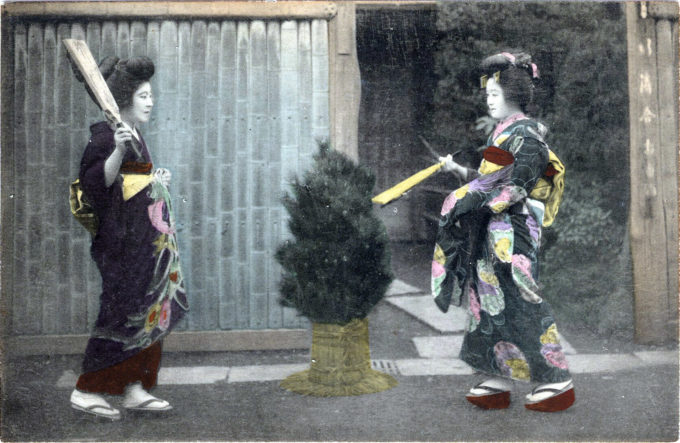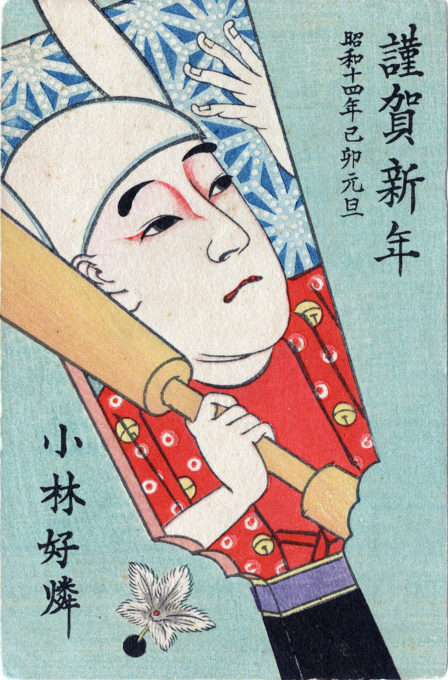
Two geisha playing hanetsuki on New Year’s Day, c. 1910. A kadomatsu sits on the street between, a traditional Shinto decoration that is considered temporary housing for kami [gods] during the New Year’s holiday.
See also:
Akemashite Omedetou (Happy New Year), c. 1910.
“The decorated paddles, hagoita, are made from the lightweight wood of the paulownia tree (kiri 桐). The original function of the paddle was for a game similar to badminton but without the net, hanetsuki, that is played primarily by girls and women.
An example of hagoita, the paddle board used for the game hanetsuki, pictured on a New Years card, 1939 (Showa 14).
“For the game, a shuttlecock (hane-ume) is made from the berry of the soap-tree (mukuroji). The berry (called the soap berry), less than a half inch in diameter, is covered in bird feathers painted with vivid colors to look like flowers. The game involves keeping the shuttlecock in the air; whoever allows it to fall loses and is marked on the face with a line in China ink. Once someone’s face is entirely covered in ink, the game is over and that player is the loser. The game is not considered a sport but rather simple entertainment for women.
“The paddles are given to girls when they are born, or at New Year when the game is usually played. They were apparently also used a votive offerings, and were placed in temples to ward off evil spirits and to bring happiness … It was between 1804 and 1829 that Kabuki characters were begun to be drawn on paddles, a custom that continues to this day.
“… The first time hagoita appears in text is in Kanmongyo-ki, the diary of the imperial Prince Sadafusa, compiled between 1416 and 1448.”
– Feminism and Folk Art: Case Studies in Mexico, New Zealand, Japan, and Brazil, by Eli Bartra, 2019


